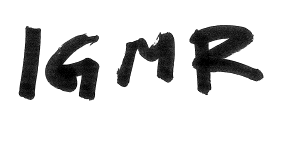Make your own biochar – a how to guide. This is the year when I will take garden fertilization seriously – Not just go and splash some liquid gold here and there and cover with grass clippings. I’m not happy with the yield in the garden. My perennials are not as nice as I think they should be. So it hit me – fertilizer… I have not studied this in depth and have not prioritized this either.
Instead, I have focused on making my heavy clay soil lighter by adding compost, mulch and through chop and drop. Our soil is a very compact clay soil so this focus has not been stupid. BUT – I thought that this is enough and that by adding grass clippings and compost it will be enough. I realize now that this may not be the case…
This spring, I have spread wood ash, spread bone meal and chicken manure pellets.
What is biochar?
Biochar is wood or organic material that is heated without adding oxygen. Much like in a coal mile. This process is called ”pyrolysis ”.
If we add oxygen the wood would have burned and turned to ashes. Now we instead get clean carbon which we call biochar when it is used to improve soil.
What are the benefits of adding biochar to the soil?
Biochar benefits the earth’s micro-life. Because it is so porous, it becomes a perfect habitat for micro-life when it is dug into the soil. Micro-life itself then contributes to increasing the rate of decomposition of bio matter in the soil. Biochar is thus a soil improver.
Biochar also absorbs nutrients and water releases them for a long time. It keeps the soil fertile and moist and reduces nutrient leakage and eutrophication. Biochar balances the earth, you could say. You can use commonly bought charcoal for the barberque as well, but there may be heavy metals, binders, substances that promote rapid ignition. So it is best to make your own biochar (or buy, see far down in the post).
Tests show that if you add 1-2 kg of biochar per square meter of soil, the yeild can increase by just under 20%. If you add 3 kg per square meter of soil, the yield can increase by more than 30%.
Another advantage of biochar is that it chemically binds carbon in solid form that remains in the soil for thousands of years. Thus, biochar acts as a carbon sink, which is positive for the environment and climate.
In the Amazon, it has been shown that civilizations added biochar to the earth to create a nutrient-rich soil that we call ”terra preta”.
Make your own biochar
The easy way to make your own biochar is to fill and seal a metal container with pieces of wood. You then place this container in another barrel, fire bowl or other and fire. The classic method is a small metal container placed in a used oil drum. Fill the oil drum with wood and make sure there are some air holes underneath to create draft. Start the fire. When it has burned, you should have biochar in the smaller metal container. A good page that describes this in a slightly more detailed way can be found here .
I myself have simplified the process somewhat. We have fire bowl / fire pit in the garden witch we regularly use. This spring we have used our fire bowl to burn fallen branches from the trees, a couple of half-dead bushes that I pulled up in the autumn and some other garden waste. Sometimes we just sit around and roast marshmallows as well.
In the middle of the fire bowl, I place an old cast iron pot that I fill with pieces of wood. Then I make a fire. When the cast iron pot stops smoking, the biochar is done.


Charge your biochar with nutrients
You can stop above and just add the biochar to your soil or garden beds. But if you do it right, the biochar should be charged with nutrients. Some claim that if you do not do that, biochar will first suck nutrients out of the soil and we do not want that.
How do you charge the biochar with nutrients? Easy. Put the charcoal in a container (we use a larger pot). Fill with water and throw in a handful of chicken manure pellets or some other fertilizer. You can also use liquid gold, which we do. I simply ask my son to pee in the pot and then I top it up with water. Let it stand for a week or so and then add the biochar to your soil. Easy peasy.
Buy biochar?
If you instead want to buy biochar most home improvement retailers like Home Depot have them readily available.
Do you make your own biochar or use biochar?
More DIY projects from yours truly here.

[…] your own bokashi bucket – a DIY step by step guide . In my post about making your own biochar , ”Emma” posted a comment that got me […]
How long do you normally let it burn for? I am limited to urban gardening and I am thinking about making biochar while barbecuing or campfiring. Normally, I’ll have a few hours. Is that enough?
That is enough – the biochar above was probably made in a couple of hours. Good luck!